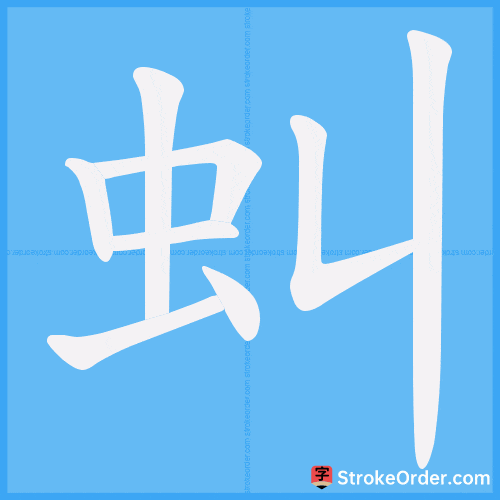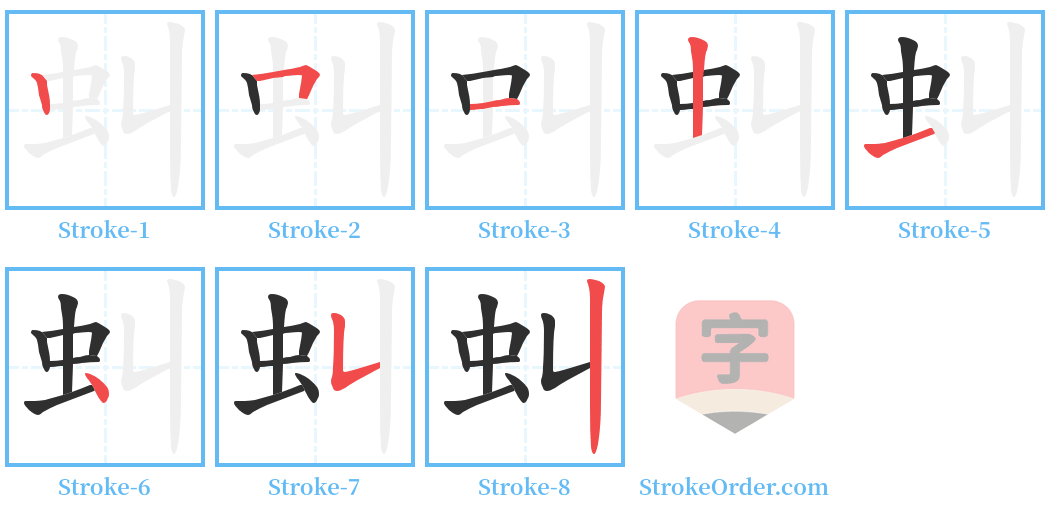虯 Stroke Order
Animated Stroke Order of 虯

Stroke Order Diagrams for 虯

Information of 虯
Pinyin
qiú
Radical
虫
Strokes
8 strokes
Usage
★★
Definition
虯
1. A mythical dragon with horns.
2. Curling or twisting.
1. A mythical dragon with horns. In the "Shuowen" (Explaining Graphs): "虯, a dragon child with horns." In the "Book of Han" (Biography of Sima Xiangru): "Riding an ivory carve, six jade dragons." Yan Shigu's note cites Zhang Yi: "A horned dragon is called 虯." In "Selections of Refined Literature" (He Yan's Ode to the Palace of Scenic Blessings): "Like the twisted chi, like the stopping 虯." According to Li Shan's note referencing "Guangya": "A hornless dragon is called 螭龍, a horned one is called 虯龍." One also speaks of a hornless dragon. In "Yupian" (Explaining Characters, Insect Section): 虯, a hornless dragon. In the "Book of Later Han" (Biography of Feng Yan): "A four-horse carriage raced on a white dragon, riding on green clouds as a disguise." Li Xian's note: "虯 is a hornless dragon."
2. Curling or twisting. In the Song Dynasty, Zhao Rushan's "Notes on Various Tribes - Records of Countries - Maritime Nations": "The country of Persia is in the southwest, where the people have very dark skin and their hair is all curling." In the Ming Dynasty, Liu Tong's "A Brief Account of Scenery in the Imperial Capital - White Stone Manor": "One pine curls, one small pavilion, stands amidst the willows."